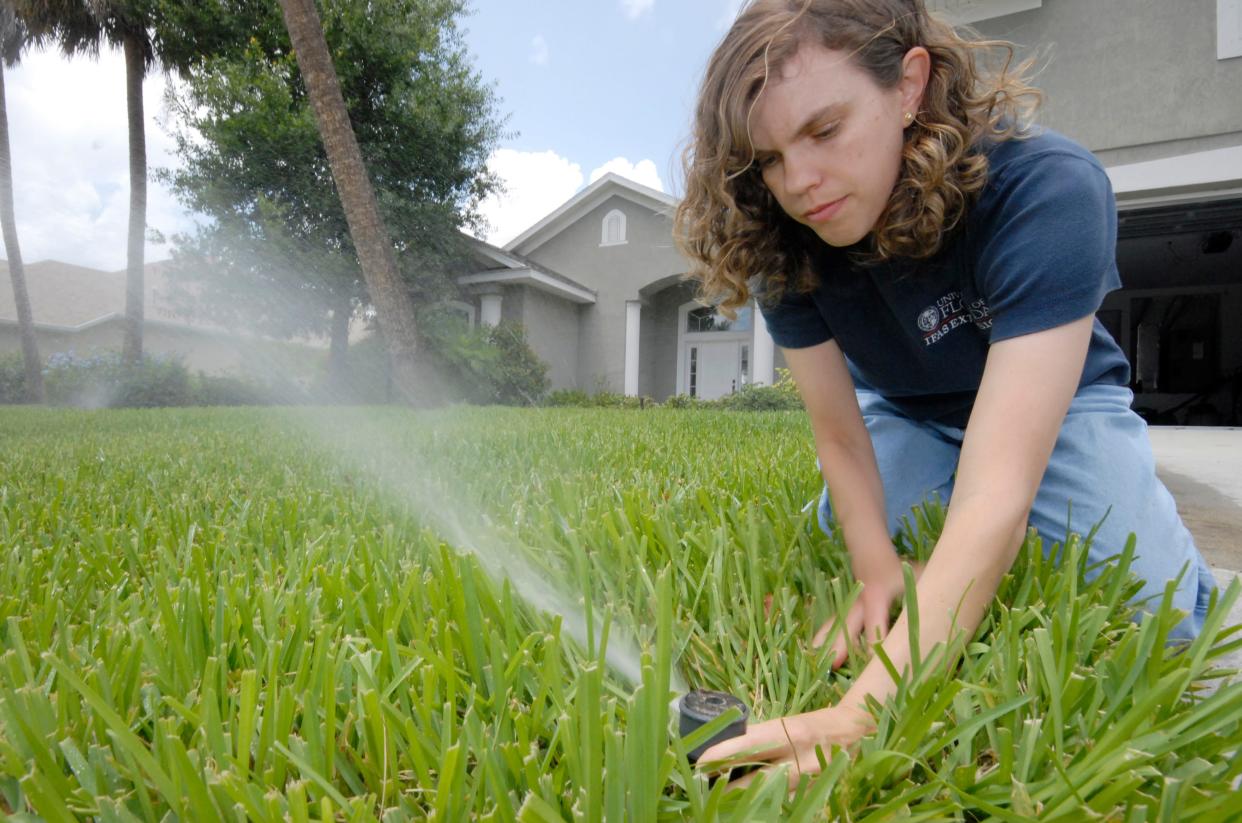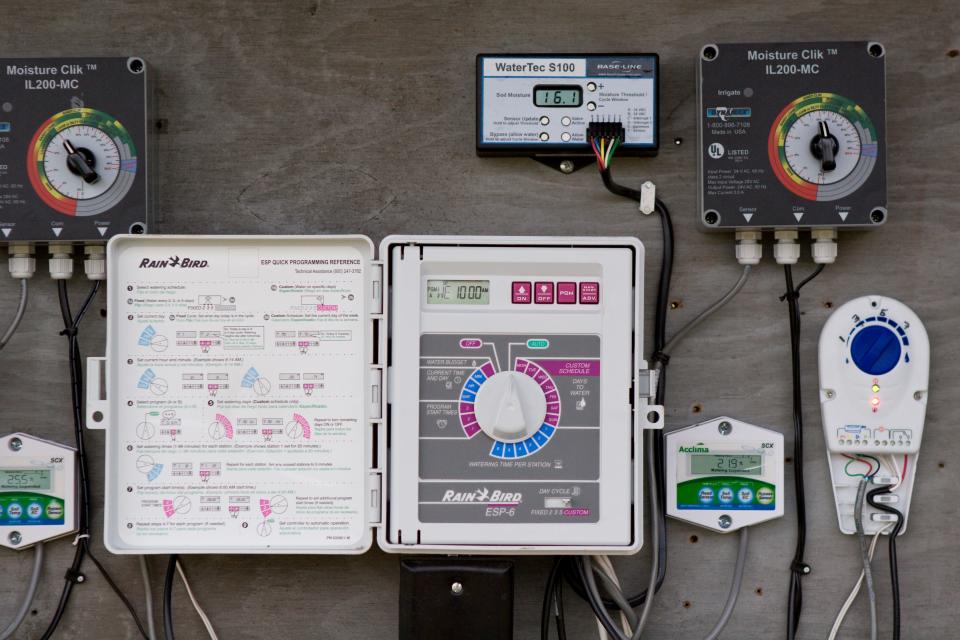Stop over-watering your your lawn, trees and shrubs. Here's how you can do it.

One of the most common problems Extension Agents see in the landscape is overwatering. People believe they are helping their plants, especially their turf, by over-irrigating, but this simply isn’t true.
Over-watering causes all kinds of problems. The most serious for your turfgrass is fungal diseases. Fungal spores must have wet conditions to germinate on your turfgrass. So, the best thing you can do to prevent them is to water appropriately. Some weeds thrive in soils that are too wet. The most notable is dollar weed. Turf watered too often has shallow root systems. The shorter roots cause your turf to suffer from drought stress sooner than properly irrigated turf.
There are other reasons for not overwatering besides the health of your plants. Around 60% of your water bill can be contributed to landscape uses if you use an in-ground irrigation system.
You can trim your bill when you make your irrigation system more efficient. Water conservation for the sake of my possible future grandchildren is my favorite reason to not use in-ground irrigation. By the year 2070, the water demand in Florida is expected to increase to 6.5 billion gallons a day, doubling the 2010 demand of 3.1 billion gallons per day. We face a looming water shortage as eventually more water will be drawn out of the aquifer than is replaced by rainfall if we don’t find ways to conserve.
Did you know that running the irrigation system in an average Florida landscape just one time per week is the equivalent of taking an eight-hour shower? Running an irrigation system one time uses 991 gallons of water. So, if you run your system 3, 4, or 5 times a week, I urge you to stop.
Fortunately, there are many things you can do to water more efficiently.
The first step is understanding your irrigation timer. All timers have the same basic functions and they are easier to use than you might think. Take control by reading the owner’s manual for yourself. If it’s lost, download a copy online. Now, set the timer to the current date and time. Then, set which two days of the week to run and a start time. Your start time should be in the early morning hours. Next, set the number of minutes to run for each zone.
Not all zones should have the same run time. The amount of time depends on whether they are spray heads, rotors, or drip emitters. There has been research done by the University of Florida that guides irrigation recommendations. In summer months in North Florida, zones with rotors should be set for around a 55-minute runtime. Zones that use spray nozzles should be set for around 20 minutes. Rotors rotate and spray nozzles spray a steady fan of water that is stationary. Those are the two most common types of nozzles in your turfgrass. Drip and micro emitters in shrub beds should be set for an hour initially, then dialed back in fifteen-minute increments every couple of weeks until the plants show signs of stress.
These are summer times, though, and less water is needed in fall, winter, and spring. That’s where the seasonal adjust feature comes into play. Using the seasonal adjust function, set the system to only use a percentage of the amount of time you just allocated to each zone. So, when fall arrives, simply set the seasonal adjust to 80%. This will tell the system to reduce the number of minutes in each zone to 80% of the time you set for summer. In winter, set the seasonal adjust to 30%, or just turn the system completely off. In spring, go back to 80% and then when summer rolls back around, set seasonal adjust to 100%.

Once you become the Irrigation Master of your domain and no longer need to call the irrigation guy just to set your clock, you now have the power to take conservation into your own hands. Here are three more things you can do yourself.
Check your rain sensor. Make sure it is unobstructed, and while the irrigation is running, take your finger and press down on the little pin sticking up. If your irrigation stops, then your rain sensor is working.
Turn off zones that don’t need irrigating by setting the minutes for that zone to zero. Did you know that mature shrubs don’t need irrigation except in times of drought? You can turn that zone completely off.
Do your own irrigation check looking for broken heads, clogged heads, and heads spraying in the wrong direction. You can call your irrigation company to fix them, or if you are handy, watch a YouTube video to see how simple those things are to fix.
Once you take control of your clock, you have the power to conserve water, reduce your disease and weed issues, and save money.
Tonya Ashworth is an extension agent and environmental horticulture and Master Gardener coordinator with UF/IFAS in Duval County.
This article originally appeared on Florida Times-Union: How do you fix an overwatered lawn? Tips, tricks for your landscape

